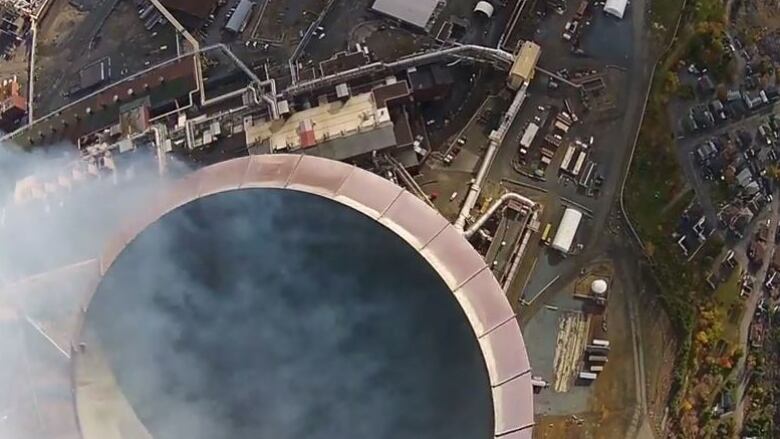Sudbury superstack faces uncertain future
Chimney now pumps out 10 per cent of what it was designed for

It's hard to think ofSudbury without its superstack.
But mining giant Vale says its massive chimneyis now simplytoo big for the job, and it's looking at how two smaller stacks could replace it.
But before anything can be done, the economy will need to pick up.
"We do not have approval to build two shorter stacks," saidFrankJavor, one of Vale's environmental managers of air.
"Those are one of the things that has been postponed because of the financial crunch. We're still awaiting that. Stay tuned."
Finally got an up close view of Sudbury's famous Superstack! #localsights #coppercliff pic.twitter.com/Iw8onaxo48
—@selenamcbride'It's much, much too big'
The importance of the superstack has been decreasing over the last few decades, Javor said.
"When the superstack was originally built in the 60s, the smelter looked much, much different than it does today. There were seven ... furnaces, 20 converters and four roasters," Javor said.
"Over the years we changed the process," he said. "We reduced the number of converters, we captured gas. So what's left going up the superstack is less than ten per cent of what it's designed for. So it's much, much too big."
Sudbury sunset. #Superstack #ShareYourWeather pic.twitter.com/XZpgwQYCSQ
—@budgie_girl2Massive fans needed to blowsmoke up throughchimney
Javor said Vale has to use a lot of energy just to get things moving up the stack's chimney and across the sky.
"We now have huge fans to blow that stuff up the stack. We burn all kinds of natural gas to give it heat and lift just so it doesn'tbellow out and come down the sides of the stack. So that's one of the reasons we need to get something smaller."
This will likely become even more of an issue as Vale greatly reduces its air pollutants in the next few years, Javor said.
The big reduction of Vale's sulphur dioxide will happen by the end of 2017. A reduction of greenhouse gaseswill finish up by 2020.












_(720p).jpg)


 OFFICIAL HD MUSIC VIDEO.jpg)
.jpg)



























































































